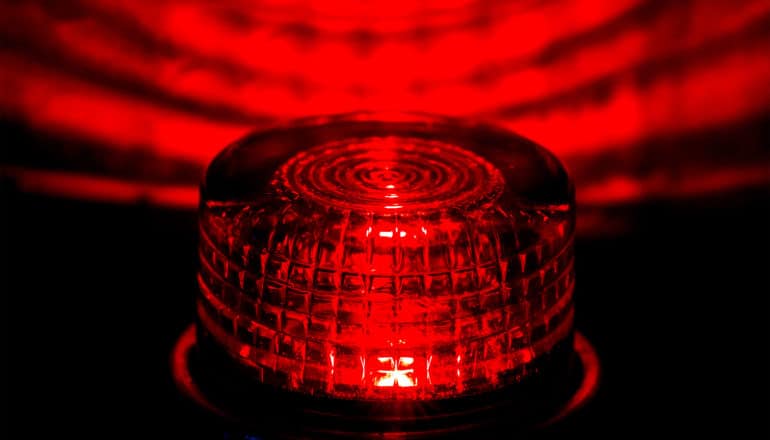
A new imaging technique uses light, sound, and nanoparticles to detect plaques that cause strokes and heart attacks.
If heart attacks blared a warning signal, patients would have a better chance of avoiding them. That’s the idea behind the new imaging technique.
“We shine light into an artery where we’ve delivered certain types of particles that can absorb that light,” says Bryan Smith, an associate professor in Michigan State University’s College of Engineering. “As a product of the release of that energy, they can literally shout back at us in ways that we can detect and use to create 3D images.”

To be clear, the sound signal isn’t audible to human ears, but it’s easily captured by an ultrasound’s transducer. This technique can now be used to directly image atherosclerotic plaques, the medical term for fatty clumps that accumulate in arteries that can lead to strokes and heart attacks.
The researchers showcased the new technique in mice, the first step towards advancing the technology for use in humans. Their results appear in the journal Advanced Functional Materials.
“The power of our new technique is in its selectivity,” says Smith, who is the director of the Translational NanoImmunoEngineering Lab located at the Institute for Quantitative Health Science and Engineering, or IQ.
“There are certainly other methods to image plaques, but what distinguishes this strategy is that it’s cellular,” Smith says. “We’re specifically looking at the cells—called macrophages and monocytes—that are most responsible for making a plaque vulnerable in the first place.”
Although it’s difficult to prove whether a particular plaque is responsible for a stroke or heart attack in a patient, the prevailing idea is that vulnerable plaques are the most dangerous, Smith says. These are inflammatory plaques that can rupture and consequently block blood vessels.
In addition to fatty deposits, vulnerable plaques also contain lots of immune cells, including many macrophages and monocytes. The researchers have developed nanoparticles—tiny tubules made of carbon atoms—that naturally and specifically seek out these cells.
In injecting the particles into mice, researchers send the tubes searching for specific immune cells that congregate in plaques. The researchers can then shine laser light into the arteries. If there is a plaque present, the particles will absorb the light and emit sound waves. The researchers then use this acoustic signal to locate and visualize the plaque.
“If you look at a normal blood vessel versus one with a plaque, there’re a lot more macrophages and monocytes in the one with the plaque,” Smith says. “And our method is really looking at the monocytes and macrophages. Virtually no other cell type takes up the nanoparticles.”
The idea behind coupling light and sound, known as the photoacoustic effect, dates back to Alexander Graham Bell in the late 1800s, Smith says. Still, to go from that idea to a medical diagnostic, it required the development of crucial technologies such as lasers and ultrasounds. The technique is now coming of age with the Food and Drug Administration approving a photoacoustic imaging machine for detecting breast cancer earlier this year.
In the future, doctors may image arterial plaques in a precise and noninvasive way through the innovations with nanoparticles.
“Currently, there is no effective way to accurately locate and treat vulnerable plaques before they lead to a heart attack or stroke,” says Eliver Ghosn, a collaborator on the project and an assistant professor at the Emory University School of Medicine and its Lowance Center for Human Immunology. “We hope our studies will help change that.”
From a treatment standpoint, Smith’s lab has also already shown that it can pack their nanoparticles with a drug used to fight plaques. Moving forward, the team will explore using these particles to aid with imaging and delivering a therapeutic.
“So you might ask, can you connect those ideas, develop a combination of a therapy and a diagnostic? I think the answer is absolutely yes,” Smith says. “There is a lot of potential in that realm. It’s in the pipeline.”
Source: Michigan State University
The post Nanoparticles could act as heart attack ‘warning signal’ appeared first on Futurity.
from Futurity https://ift.tt/3m93T7A
No comments:
Post a Comment